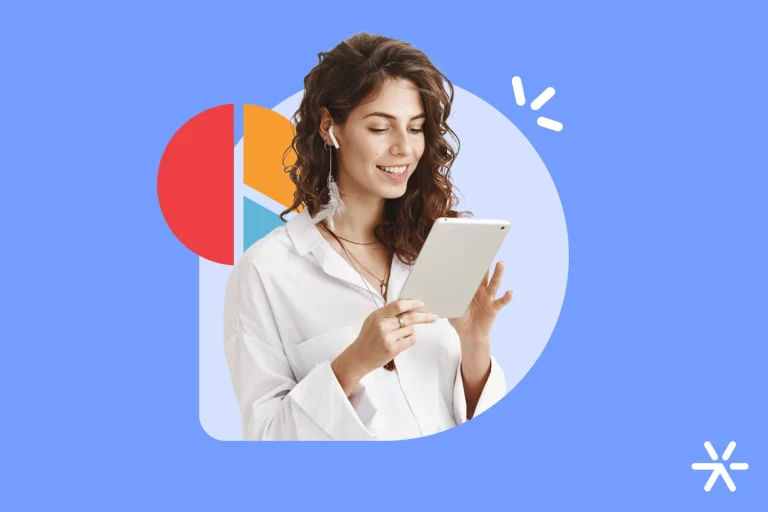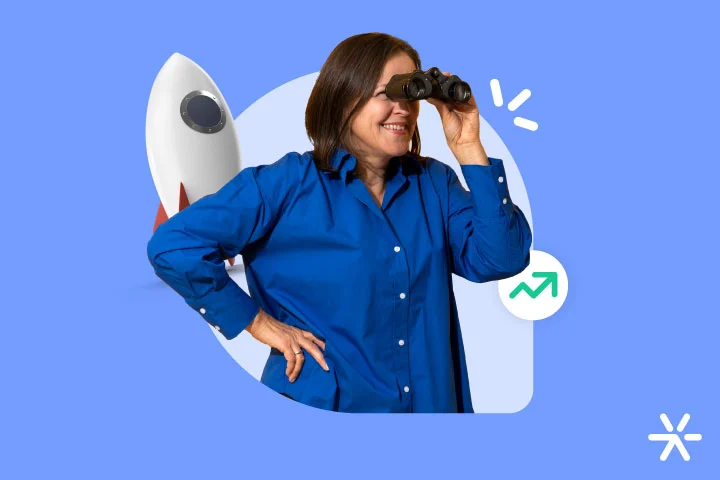Lead Generation for Agencies: 16 best practices
Lead generation for agencies can be a very daunting subject within the companies. Many of them focus so much on delivering results to their clients that they end up forgetting to bring them to themselves.
But this focus should be the goal of all agencies. Lead generation for other clients is important, of course, but nothing is more important for an agency than always increasing its client portfolio.
And this is done with leads. In this article, we will talk a lot about how to replicate the same success that you deliver to your clients right there at home.
There’s a step-by-step guide, channels of action, and, in the end, some mistakes that agencies make.
Let’s get started?
Inbound Leads vs. Outbound Leads: Differences and Which is Better for Agencies
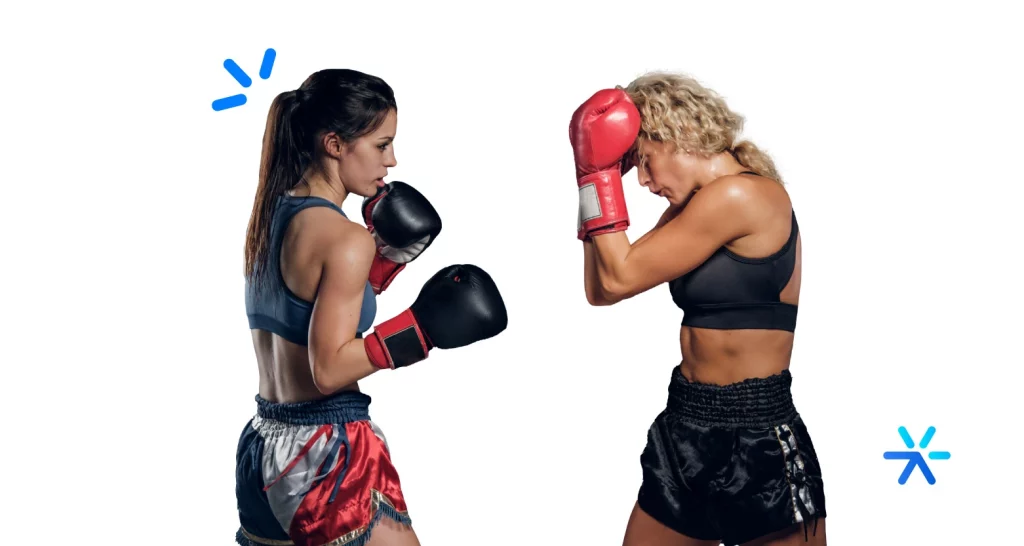
Which leads should the agency prioritize, outbound or inbound?
First of all, a brief introduction. Inbound leads are those that reach your brand through an attraction strategy, involving organic traffic, content marketing, rich materials, lead magnets, etc.
In other words: you create the necessary conditions for your lead to find your brand during their buying journey.
Outbound leads are different: they reach your agency through active and interruptive campaigns, such as Google Ads and Social Ads.
For an agency, there is nothing written in stone saying which leads are better or which strategy is most recommended. Successful agencies do both at the same time.
They work on inbound marketing to get more leads, nurture them, qualify them, and sell their services. Likewise, they also work on outbound with the same goal.
These strategies are different and even seem, on the surface, to be completely opposite to each other. But in many cases, they are complementary.
It is common to find agencies that focus on one or the other strategy. But at the same time, those that generate more leads employ an integrated and holistic strategy.
Step-by-Step Guide: The Process of Lead Generation for Agencies
It’s also quite common for lead generation for agencies to end up ignoring the lead generation process itself, and this has severe impacts on the strategy.
Here’s the breakdown: many agencies, when they don’t carry out structured work in lead generation, end up compartmentalizing their work too much. “This is the organic lead generation team, that’s the paid media team,” and so on.
And this generates some problems. When separate teams have separate and unrelated goals, results may come, but there’s no synergy among them.
Then problems arise like many leads for few sales. Or lots of traffic for few leads.
The truth is that lead generation for agencies is a very well-defined process that needs to be created and put into practice in conjunction with various other areas.
That’s the process we’re going to talk about now. Ready for the step-by-step guide?
Step 1: Traffic Generation (Organic or Paid)
The first step for agencies to generate leads on their site is to create a strategy to attract more visitors.
This usually happens through a mix of organic and paid strategies, with huge support from content marketing.
Beginner agencies typically start this traffic generation strategy through blog articles, social media posts, YouTube videos, etc.
On the outbound side, ads for this content or for more commercial parts of your site.
For example: an ad can be configured for a specific blog post of yours. But it can also be configured for a specific campaign, for the case studies page, features, etc.
Usually, the content creation work is supported by keyword research. It works like this: the agency looks for terms that people search for on Google related to its segment. And then, creates content based on these terms.
With this work, you increase the number of people on your site. And eventually, these people turn into leads. How?
Step 2: Lead Generation
With this increase in visitors to your site, you already have great opportunities to generate leads. It’s just a matter of creating great materials or offers and distributing them effectively.
This process is usually done by creating Lead Magnets – also called rich materials or digital baits.
The process is simple: you understand the pains and challenges of your target audience and create materials that really help them solve them. And this material can take many different forms: an e-book, a webinar, an infographic, a spreadsheet, etc.
When your user finds this material that makes so much sense to him (after all, you know your audience), he is willing to leave his contact information and allow communications from your agency. There, he’s now a lead.
But there’s also a very important point to consider: how you offer this material.
Leadster is a chatbot focused on lead generation, with proven results in this area. You can offer a landing page with a form to download the material, but a chatbot, with proactive calls, has the potential to generate up to 3 times more leads.
The thing is, a form is too bureaucratic and doesn’t contribute to the user experience. With a chatbot, you create flows within specific pages on your site to offer your material proactively and more naturally, as if it were a conversation with the visitor.
But let’s get back to this topic throughout the article. For now, let’s continue with the lead generation strategy for agencies:
Step 3: Qualification, Nurturing, and Commercial Approach of Leads
With leads being generated, you need to work on your commercial approach. And this is done in several ways.
First, you need to work on your lead scoring to understand where in the marketing and sales funnel your lead is.
If he’s advanced, already in the final stages, a more robust commercial approach is indicated – visits, personalized emails, calls, etc.
But if the lead isn’t in this more advanced stage, it’s necessary to nurture and qualify him. And this happens through the offer of more materials especially by email, in nurturing flows.
This final stage is very important. It determines the success of all the work you did earlier. And, at the same time, without the work done beforehand, it doesn’t work.
That’s why I say that the lead generation strategy for agencies needs to be integrated. The teams aren’t islands, but rather part of the same team. The entire company needs to be focused on lead generation and utilization.
Alright: that was a pretty quick step-by-step of how the strategy works. Let’s zoom in and talk about the main lead generation channels for agencies?
10 Lead Generation for Agencies Channels
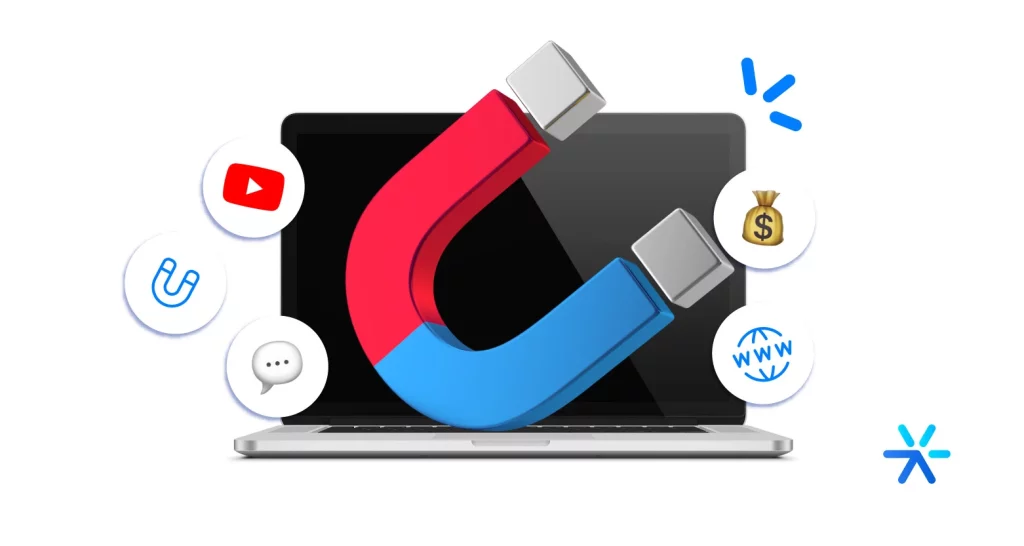
Lead generation for agencies involves several different channels. Some of them are directly related to conversion: that’s the case with chatbots, for example, and the materials they offer.
Others not so much: that’s the case with blogs, which act on traffic generation and offer conversion opportunities, but not directly. Nobody converts into a lead just to read an article.
Starting from this holistic approach, it’s important to delve into each of these channels. They are the ones that will ensure the success of your lead generation, directly or indirectly.
Are you ready to discuss them further? Let’s go:
Updated Blog
Blogs are top-of-the-funnel strategies: they are responsible for generating traffic on your site and bring along conversion opportunities.
For example: one of the most common uses of the Leadster chatbot is offering conversion materials — Lead Magnets — on pages related to that material.
If your visitor is reading an article about generating real estate leads, you can configure the Leadster chatbot to say “Check out the success case of Real Estate XYZ.”
This is an example that can be applied differently and personalized on each of your blog pages. Or, if you prefer, you can create general flows involving an entire category.
In the case of the example, every time you talk about real estate, you can display a personalized message for each article or the same message for all. All in a few clicks.
It’s important to discuss the conversion opportunities of blogs because they are often described, most of the time, as a traffic generation engine.
But they also carry this responsibility: offering the visitor the possibility of becoming leads.
Content Production on YouTube
An agency that isn’t working on YouTube is missing out on leads!
Content marketing is absolutely comprehensive. It doesn’t need to be done only on the blog: wherever you get an audience, you can generate leads.
There are several agencies doing this work on YouTube. It’s simple: you can adapt a blog post into a video, put links to denser materials in your description, and there you go: the more people watch your video, the more leads you’ll generate.
Lead Magnets
For this to work, you need digital baits — Lead Magnets, which literally means “lead magnets.”
These materials need to be closely related to your target audience to make sense.
And this is a very common mistake of agencies: focusing on what’s interesting during the meeting, but not very much in line with the real needs of their clients.
Remember that they are the main channels that will turn your visitor into a lead.
Your conversion rate will be directly related to the quality and relevance of these materials.
Lead Magnets need to go through a simple scrutiny before being produced. Some questions:
- What specific pain does this material solve?
- Is the material simple enough for someone working to follow?
- How similar is it to the materials that have been successful so far?
- Do we have the technical proficiency to produce this material?
- Where will we promote this material besides the website and blog?
Free Services
One of the best ways to generate leads for agencies is by offering some type of simple service for free.
A consultation, a website evaluation, a personalized tutorial for creating a campaign: all of this works very well because your visitors will always prefer practical materials over e-books.
And for this service to be provided, the visitor invariably needs to convert into a lead! It’s a win-win situation.
Just be careful not to bite off more than you can chew and end up offering more than you can produce, okay?
Pillar Pages and Topic Clusters
These are two related strategies that are rarely applied in lead generation for agencies.
I understand: putting them into practice is difficult, it requires a lot of preparation, a lot of content being produced, and exceptional quality control. Plus, a lot of familiarity with your website publishing tools, your CMS.
A Pillar Page is the central piece of a series of topics, delving into a denser subject. Usually, they’re not on the blog but directly on the site.
Returning to the real estate example: you can create a Pillar Page that gathers everything about the segment. How to generate leads, how to close sales, how to attract more visitors, etc.
Topic Clusters are the names for the blog articles that accompany these Pillar Pages and are linked to them. For example: you create your Pillar Page about marketing for real estate, and then create several other smaller articles related to the subject.
These smaller articles are linked to each other and also to the Pillar Pages themselves.
This is a two-way strategy. Besides increasing your traffic by the authority it gives to your blog and site, it also offers great conversion opportunities.
To conclude, Pillar Pages are also widely used as landing pages for ads and configured with CTAs via chatbot.
Chatbots
The importance of chatbots in these channels is huge, as you may have noticed throughout the text.
Mainly because chatbots function as triggers for conversion.
What’s easier for your visitor: clicking on a banner, going to a landing page, entering their information, going to a download page, and accessing your material or doing all this within the same page, and with personalized approaches?
That’s why Chatbots have the power to accelerate lead generation for agencies: they’re practical and don’t interrupt the user experience.
Little by little, Landing Page forms will become obsolete as Chatbots evolve.
Here at Leadster, we’re taking the next step, incorporating Artificial Intelligence tools into the flows to make them increasingly simple to produce and scalable.
Chatbots also come with great functionalities for mid-funnel and bottom-funnel leads. For example: you can schedule meetings automatically and deliver opportunities instantly straight to your sales team.
Lead Ads
We’ve talked a lot so far about Paid Media and its role in lead generation for agencies, but we need to focus a little more on how exactly they work.
There are several types of ads on the various available platforms. On social networks, Meta Ads offers one specifically for lead generation: they’re Lead Ads, or registration ads.
This modality allows you to set up ads with the purpose of capturing information from your audience within social networks, without the user needing to visit your site.
And with integration with CRMs and marketing platforms, these leads can be incorporated directly to you database.
5 Common Mistakes in Lead Generation for Agencies and How Chatbots Solve Them
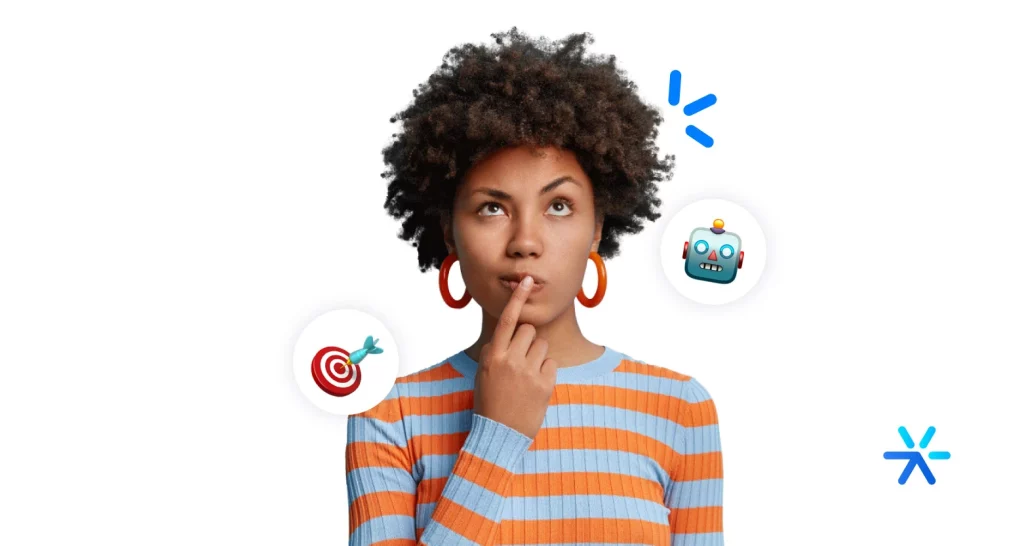
Well, we’ve reached a crucial point in the text. We’ve already discussed choosing between Inbound and Outbound, the step-by-step lead generation process — the formal lead gen process — and delved into conversion channels.
But now we need to talk about one of the most important points in the text: the agency’s experience. What really tends to go wrong in lead generation. And of course, how to overcome each of these obstacles with a solution that seems simple but works wonders: the Chatbot for lead generation.
Let’s see some common mistakes that agencies make in lead generation?
Many leads for few sales professionals
This is a very classic mistake in agencies that suddenly find success in the lead generation strategy, sometimes even unintentionally.
This happens a lot, you know? Maybe your agency is starting to produce content slowly, but one article brought so many views that now all the others appear more easily on the first page of Google.
Suddenly the agency is getting 50,000 visitors per month and generating 300 leads from these people. But the sales team hasn’t grown.
Top of Funnel and Middle of Funnel leads are not the biggest problem here, since with marketing automations they follow the sales funnel without much interference until they reach the end, and for that, the team doesn’t need to be so large.
But Bottom of Funnel leads need quick responses. If someone asks for a quote, your competition is calling within 10 minutes — and you need to call in five.
In these cases, a Chatbot works by pre-qualifying bottom-of-the-funnel leads. Then, it hands over the lead to the salesperson responsible for that area, or whoever is more available.
This way, even with a beginner strategy, which is starting with fits and starts and still getting the hang of the strategy, it can generate more quotes from qualified leads right in the first results.
Leads without a profile for your product
This is also a very common mistake in agencies that start the lead generation work somewhat hurriedly, like the previous one. Suddenly, out of those 50,000 visits and 300 leads per month, only a few are really your profile.
And then? How to qualify them? Including all of them in a nurturing flow to have a weak outcome in sales is complicated because the management expects great results from so many leads generated.
The way out is to qualify them beforehand, and create negative triggers. Already at the time of the first conversion, you ask a key question: what is the size of your company?
Those who don’t fit into your market fit don’t even enter your sales funnel.
This is very common due to the democratic nature of marketing. If you launch material talking about “300 ChatGPT prompts for copywriting”, it’s impossible to limit that only your target audience will read it.
Marketing topics, for the most part, are consumed by all kinds of people — from marketing professionals to people who are just starting to study the subject now.
This prior qualification can be done directly with Chatbots, at the time of conversion. And unlike Landing Pages, the Chatbot can talk to these leads and direct them to more appropriate areas on your site.
Many visitors and few leads
This is also a very, very common situation in agencies. In many cases, the lead generation strategy is still not well defined, and the agency ends up producing content without really knowing what to do with the readers.
The best way out of this situation is to pause production and start creating Lead Magnets and Pillar Pages.
Lead Magnets act on conversion, being materials that turn visitors into leads, and Pillar Pages work as a mini-ebook that generates conversions further down the funnel.
And all of this, of course, with the support of a Chatbot. Instead of spending energy creating Landing Pages for all your materials, you can register your leads directly on the page where they are, and send the material by email.
Having many visitors and not generating leads is a serious problem. You generate visitors for something, right? The situation is serious enough for you to have to reassess your entire production for a moment, and focus on what’s most important.
Too much content and few visitors
It can also happen that you are producing content on several fronts, but not bringing in many visitors. What’s going on?
A lot could be happening. First: what keywords are you using? Do your research and analyze not only in specific tools for this — SemRush, Google Keyword Planner, Ubersuggest, etc. — but in Google itself.
With this, you can understand who is talking about what about your topic.
This is the most basic step, but you can perform other diagnostics because organic results, even with good keywords, take a few weeks or months to appear.
Another point: how is the user experience on your site? And SEO? It’s important to analyze this to resolve possible problems with Google, which may be preferring other sites to yours.
And lastly, it’s always good to truly assess the quality of your content. Many agencies turn their noses up at this stage, believing that the content they are producing is already great.
The problem is that for the marketing segment, your content needs to be extraordinary. There are several marketing agencies and startups doing this work for years, some even for more than a decade.
You’re competing with them, so your content needs to be better or at least on par to stand out.
Many leads and few sales
This problem also occurs for a number of reasons, but the most common is a mismatch between marketing and sales teams.
What happens: marketing works mainly at the Top of the Funnel and Middle of the Funnel, while sales work more at the Bottom of the Funnel, closing sales through MQLs (qualified leads) that marketing generates.
When many leads are being generated but they are not creating sales opportunities, you have a problem in the middle to the end of the funnel.
Qualification isn’t working well, lead segmentation isn’t either, Lead Scoring isn’t being applied, or the sales team isn’t accessing leads in a straightforward manner.
All of this can be circumvented with a Chatbot on your website. With Leadster, you can convert the lead and automatically integrate it with your marketing platform.
When automations are well configured, the Chatbot sends the leads and they enter your flows automatically, crossing the funnel and going directly into the hands of the sales team.
And of course: all with prior qualification, done directly at the source and without the hassle of overly long forms.
Through conversational marketing, you can learn much more about your lead, and through integrations, send them with a high level of qualification to the responsible teams.
Multiply your lead generation and that of your clients as well!
Throughout the text, we’ve talked a lot about the power of Chatbots for lead generation for agencies.
And I know that many people reading this text will think, “Wait, isn’t Chatbot for customer service?” Some are, but not Leadster’s.
Here, our commitment is to generate leads and make your agency have more meetings and more sales.
And your clients’ companies too.
We work with a partnership plan that recommends you to new clients and pays you a commission for each of your clients who adopt Leadster.
The process is simple and no credit card is required. Test for free today!




